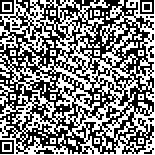| 摘要: |
| [摘要] 目的 探讨空腹血糖受损(IFG)、糖耐量受损(IGT)人群发生糖尿病的危险性及其影响因素。 方法 对2003年4~6月朝阳市市区居民1 062人糖尿病普查中IFG、IGT患者79人于2006年4~6月进行随访调查。测量身高、体重、腰围、血压,做过夜空腹75g葡萄糖耐量试验,同时测定血总胆固醇(TC),甘油三酯(TG),高密度脂蛋白胆固醇(HDL-C)。结果 随访的65人中22人发生糖尿病。其中孤立性IFG(I-IFG)糖尿病转变率为10.8%,孤立性IGT(I-IGT)为9.2%, IFG/IGT为10.4%。在不同的年龄组,随着年龄增长糖代谢异常、高血压、肥胖、脂代谢异常有增加趋势,在40岁以上人群糖代谢异常的患病率有明显增加趋势。进行单因素相关分析结果发现血糖升高可能与增龄、糖尿病(DM)家族史、劳动强度、腰围指数(WC)增加、收缩压(SBP)增加、血脂异常等相关。进行Logistic回归分析,高龄、血压升高、中心性肥胖、体力活动强度减弱均为糖尿病危险因素。结论 I-IGT、IGT/IFG人群糖尿病累计发病率明显高于I-IFG人群。增龄、向心性肥胖、高血压、体力活动减少是糖代谢异常的重要危险因素,因此控制血压、体重,增加体力活动,对糖尿病预防具有重要意义。 |
| 关键词: 空腹血糖受损 糖耐量受损 糖尿病 患病率 危险因素 |
| DOI:10.3969/j.issn.1674-3806.2009.07.17 |
| 分类号:R 587.1 |
| 基金项目: |
|
| The survey of three-year follow-up and the related risk factors of impaired fasting glucose and impaired glucose tolerance |
|
ZHANG Hai-guang, WANG Yan, WANG Xu-hui
|
|
Department of Endocrinology, the Second Hospital of Chaoyang City, Chaoyang Liaoning 122000, China
|
| Abstract: |
| [Abstract] Objective To investigate the natural outcome and the related risk factors in subjects with impaired fasting glucose (IFG) and impaired glucose tolerance (IGT). Methods During April 2006 to June 2006, 79 subjects with IFG and IGT, who had been diagnosed as abnormal glucose metabolism based on a diabetes mellitus census of 1 062 citizens in Chaoyang city from April 2003 to June 2003, were examined with height, weight, waist circumference, blood pressure, and 75 g oral glucose tolerance test (OGTT). Meanwhile, serum total cholesterol (TC), triglyceride (TG) and high density lipoprotein cholesterol (HDL-C) were also tested.Results Of the 65 subjects 22 subjects had diabetes mellitus(DM). Among them the conversion rates to DM were 10.8 %, 9.2 %, and 10.4% for the subjects with I-IFG, I-IGT, and IFG/ IGT, respectively. With the age increasing, abnormal glucose metabolism, hypertension, obesity and abnormal lipid metabolism became much severer. Incidence of abnormal glucose metabolism obviously increased in the subjects aged above 40 years. The results of mono-factor analysis showed that glucose increase may be related to the aging, DM family history, work intensity, increase of waist circumference and systolic blood pressure, abnormal blood fat. Logistic regression found that aging, central obesity, hypertension and less physical work were all the risk factors of DM. Conclusion Cumulative life-incidence of DM in the subjects with I-IGT, IGT/IFG is significantly higher than that in the subjects with I-IFG. Aging, central obesity, hypertension and less physical work are the main risk factors of abnormal glucose metabolism. Therefore, it is essential to control blood pressure and body weight and enhance physical exercise in order to prevent from DM. |
| Key words: Impaired fasting glucose Impaired glucose tolerance Diabetes mellitus Morbidity Risk factors |

